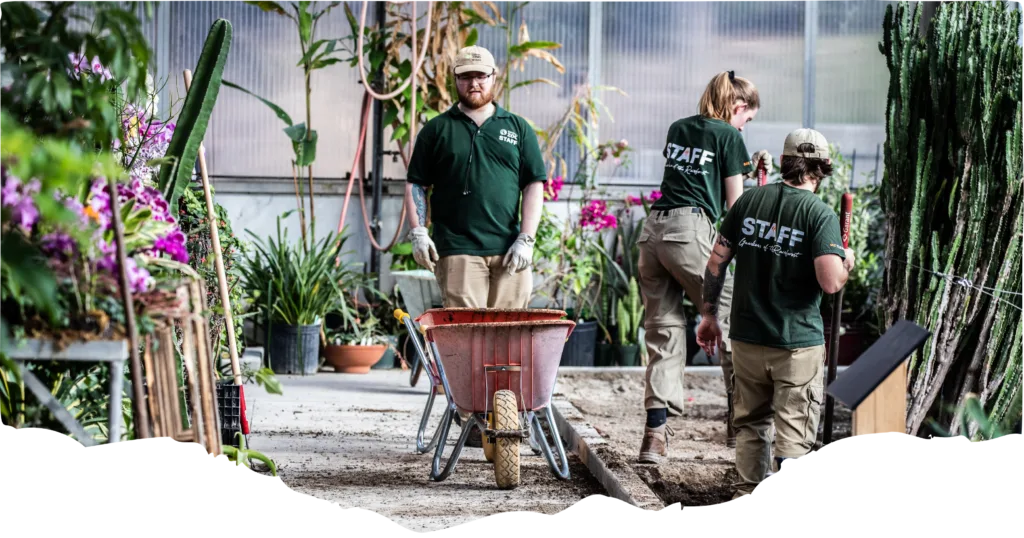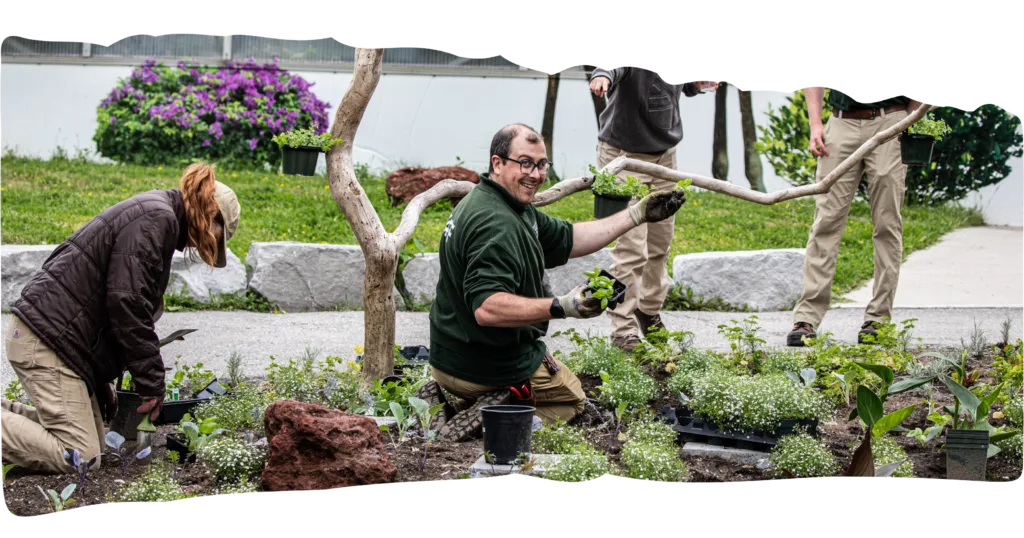
Let’s Talk Gardens: The Toronto Zoo Horticulture Team’s Secret to Success
Spring is here and there’s no better way to celebrate than by getting outside, soaking up some sunshine, and appreciating the beauty that nature has to offer. If you’re looking for the perfect way to connect, why not start thinking about your garden? Whether you’re a seasoned green thumb or a newbie gardener, the Toronto Zoo Horticulture team has some great tips and tricks to help you create a flourishing garden that will bloom all season long.
Did you know that the Toronto Zoo is home to more than 500 different plant species? From the beautiful greenhouse to the meticulously planned and curated gardens, each area is designed with care. From vibrant spring flowers to lush summer greenery, the gardens here are a true testament to the magic of nature and the stories that they hold.
Beyond the Garden: How the Toronto Zoo Horticulture Team Supports Wildlife
The Toronto Zoo gardens aren’t just about aesthetics—they also play a crucial role in supporting the different wildlife that call the Toronto Zoo home. At the Toronto, we don’t just tend to our gardens; we work alongside our Wildlife Care, Nutrition and Exhibit Design teams to create animal habitats that are not only beautiful but enriching.
By planting the right types of vegetation and incorporating native plants, we provide our animal residents with a natural environment that enhances their well-being as well as grow some of the animal’s food. Did you know that your Toronto Zoo has an offsite Browse farm? Browse is an important part of many of our animals’ diets and enrichment routines so having a team skilled and equipped to grow this essential plant is a win-win for both nature and the animals that call the zoo home!
6 Essential Tips from Ben – a Member of Toronto Zoo Horticulture Team to Create a Thriving Garden

Whether you’re a seasoned green thumb or just starting your gardening journey, there are key tips and tricks that can help you achieve a flourishing garden. From understanding your soil to the importance of patience, these guidelines will set you up for success:
- What to Plant and Where to Plant: The secret to a garden that thrives lies in understanding both your plants and your space. Take the time to study your garden’s layout and the surrounding environment. Know what your plants need and match them with the right spots in your garden. Some plants thrive in full sun, while others prefer a shady corner. By tailoring your choices to the environment around them, you’re setting yourself up for gardening success!
- Know Your Soil: Healthy plants begin with healthy soil. Your garden’s soil plays a critical role in how well your plants will grow. Test your soil to ensure it’s the right type for the plants you’re hoping to grow. If you’re unsure, reach out to a local nursery for guidance on soil amendments.
- Diversity is key!: A diverse garden is a resilient garden. Plant a variety of flowers, herbs, and shrubs to create a more resilient and balanced ecosystem. Not only will you add visual interest and texture, but different plants attract a range of pollinators, which helps improve your garden’s overall health. However, don’t overdo it by planting “one of everything”—you want to create a harmonious balance. The variety should encourage pollinators to cross-pollinate, increasing the strength and resilience of your plants over time.
- Water Wisely: Overwatering can be just as harmful as under watering! Make sure to check the moisture level of your soil before giving your plants a drink. Overwatering can lead to root rot, while under watering can dry out your plants. Early morning is the best time to water, as it gives the plants time to absorb the water before the heat of the day. This allows the plants to absorb the water before it evaporates And remember, different plants have different needs—be sure to tailor your watering schedule based on the plant’s environment.
- Start Small: If you’re new to gardening, don’t feel like you need to tackle the whole yard at once. Start with a small space or a few pots and work your way up. Gardening is all about learning as you go! You can add the building blocks, but only patience and knowing the language of your plants will give you the garden you originally designed in your head. Taking the time to plan out what your plants’ final sizes will be, their light requirements, soil moisture, and pruning requirements will be is the key to success.
- Patience is Key: Plants grow at their own pace, so don’t get discouraged if things don’t bloom immediately. Keep nurturing your garden, and soon enough, you’ll see the results of your hard work. Learning to be patient and watch how your plant responds to small changes will help provide you with that essential knowledge. When in doubt, wait a week.
